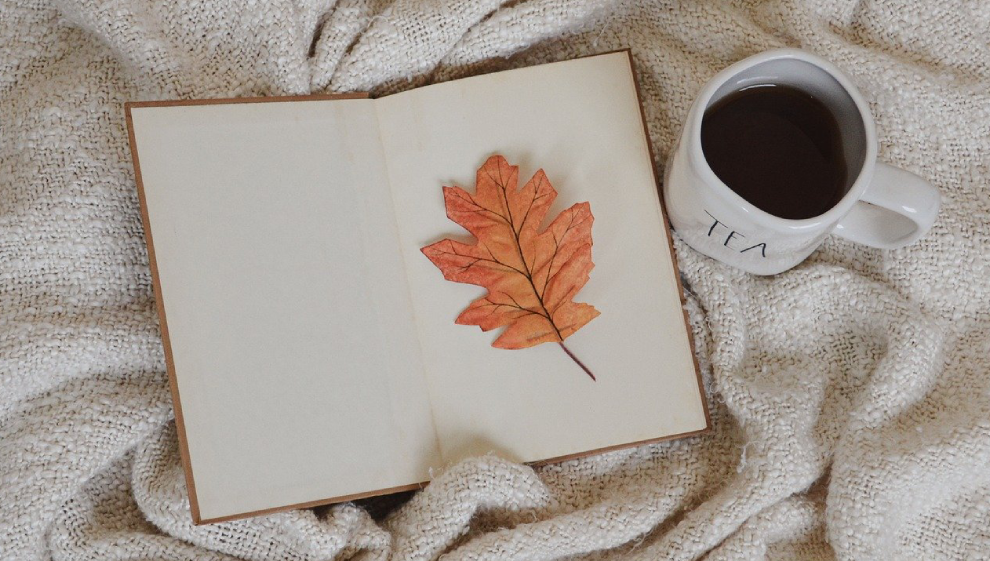How a gratitude journal can help your mental health
The best part is that you can start and finish journaling in two minutes, and there’s no right or wrong way to do it. Find out more about the benefits of gratitude journaling and how to get started, below.
What is gratitude journaling?

In short, gratitude journaling is writing down the things in life that we’re grateful for. The list could include 5, 10, or 100 things. The idea is we focus our mind on what we have to be grateful for, rather than the things we wish we had.
Keeping a gratitude journal helps adjust our thinking so we spend more time focused on the positive things in life than the negative ones.
You can start a gratitude journal at any time. There’s no specific format to follow and you can be as detailed or as vague as you like. If you stick with it, you’ll find you develop a style and system that works for you over time.
Why does it work for some people?
It's usually when we focus on any perceived lack in our lives that we can start to feel down, envious, not good enough or stressed.
When we take the time to look at what and who we have in our life, how far we’ve come, and how much we once wanted the things we now have, our perspective and mood can start to shift to one that’s based on gratitude rather than desire and envy.
Who’s doing it?
The best thing about gratitude journaling is that anyone can do it.
Gratitude journaling has been endorsed by a number of celebrities in recent years. Famous faces like Emma Watson, Oprah Winfrey, and Tony Robbins all attest to how gratitude journaling has helped them.
You don’t need an app or specialist equipment. You don’t even need a smartphone. Whilst apps do exist to help if that’s your thing, you can just as easily get started with a pen and paper.
How to keep a gratitude journal
There’s no right or wrong way to start your gratitude journal. Looking online for a template to follow can help you get started though.
You might want to write a numbered list that you fill in daily or print off a more detailed template that includes questions about your feelings and decisions that day.
The most important thing is you start writing about what you’re grateful for in life.
What’s a gratitude journal look like?
It’s important to remember that there is nothing too big or too small for you to include. To help you get started, we’ve included an example gratitude journal entry below:
- Access to running water
- A bed to sleep in and a roof over my head
- My sense of humour
- My dog who I love
- Living in a country where I feel safe
- My favourite fluffy socks that keep me warm in the winter
- Chocolate
- Seeing old friend
- A loving family
- Watching the sunset from my window
Is there a wrong way to journal?
Absolutely not.
As long as you’re training your mind to focus on the things that matter most to you and that you’re grateful for, you’re doing it right.
Templates exist to get you started and to help guide you through the process, but there’s no “right or wrong” way to start journaling.
Try to avoid comparing with others
Comparing your list with others online can adjust your focus back onto wants and desires. Try your best to avoid attaching emotions to what’s on your list.
If you feel guilty for what you have because someone else might not, try flipping that around and expressing even more gratitude for the basic pleasures in life.
What are the benefits?
- Shift your focus from what might be lacking in your life to what you already have
- Elevate your mood by reflecting on positive experiences
- Feel less materialistic
- Adjust your perspective from focusing on what you want
- Increased resilience and ability to cope with challenges
- Reduce mental stress
- Improved overall mental health
- Promote contentment and gratitude for what you have in life
- Improved sleep
- Strengthen social bonds by acknowledging and appreciating the positive qualities in others
- Increased self-awareness and self-reflection
- Feeling present by listing what you have access to in the here and now
- Assist with goal setting in the future by reflecting on past achievements
How to stick with it
Got drawers full of half-filled journals you swore you’d stick with? Say you’re going to start journalling every January and never get around to it?
If this sounds familiar, you’re not alone.
Three days a week
If you’re new to gratitude journaling, pick three days a week to write in your journal and start by listing just three things you’re grateful for. By committing to doing less, you’re less likely to drop your new habit and beat yourself up if you can’t keep up.
Writing three days a week means you have plenty of time to build out your list by reflecting on what you're grateful for. You can always add to your journal and expand on your list as you build writing into your routine.

Find a style that suits you
It’s no good buying an expensive journal that asks you 5 questions a day and asks you to list 15 things if you’re not able to keep up.
Whether a bulleted list works for you or scribbling down as much as you can think of on a scrap of paper sounds more up your street, find what works best for you and stick with it.
Take five to start
Start small.
You don’t have to spend hours writing in your journal. The idea is that you spend a quick 5 minutes re-engaging your thought process with the things that matter most in your life.
Really try to honour those five minutes that you have dedicated to journaling. Keep your phone in another room, ensure you don’t have to rush off somewhere straight after, and make the time about you.
If you want to expand your gratitude practice, you can dedicate more time to it once you’re in a good routine with your journaling.
Dedicate a quiet space to journaling
Find a quiet space and go there every time you journal. Why? Routines and habits are easier to pick up if we associate places, things, and people with them.
Much like leaving your running shoes by the door makes outdoor exercise a little bit easier, dedicating a little corner of your house or flat to sitting peacefully can really help you stick with writing.
Think about how you can make that space inviting and somewhere you want to spend time. Fill it with things that bring you joy like lights, candles, your favourite books etc.
Should I share it with anybody?
Connecting with others with the purpose of sharing what you’re grateful for is common in many communities.
The idea is that by expressing gratitude for things, you begin to understand how lucky you are to have what you do. Sharing with others can also help them remember things that they’ve missed on their own list.
Many apps have a share function where you can quickly see and share your list with others. Whilst you can share your list, don’t feel any pressure to. Most people don’t, and you’re not doing anything wrong by keeping it a personal and introspective practice.
How long does it take to see the benefits?
It’s impossible to put a timeframe on how soon you’ll start to see the benefits of gratitude journaling.
If you’re keeping up with your regular entries as part of a wider health and wellness routine, you should start to appreciate the things you have fairly quickly. When we focus on what we have and not on what we don’t have, our entire emotional outlook and response can start to shift away from wants and desires.
I'm struggling to find things to write about
Whilst it may seem like everything is going against you at some point in your life, there is always something to be grateful for.
It’s only when we take time to think about those less fortunate than ourselves that we begin to appreciate what we have, no matter how little that may be to someone else.
If you’re struggling to find things to put on your list, focus on the following:
- Basic needs that are crucial for keeping you alive
- Things outside of yourself and your immediate control
- Things you take for granted and don’t really ever think about
- What you can see, smell, hear, and touch
- Your health and being alive
- Nature and your surroundings
- Future possibilities
Frequently asked questions
Can I write things more than once?
Absolutely.
Lots of people start their gratitude lists with the necessities that keep us all alive. These things don’t change day to day, but it doesn’t mean we should be any less grateful for them.
Listing some of the same basic things every day can help foster an appreciation for things in life that we would otherwise take for granted.
Is there a specific time of day I should write?

Some people prefer to do their gratitude journaling when they wake up to give an early reminder of what they have to be thankful for.
Others like to reflect on the day and all the good stuff that’s happened by doing theirs before bed.
The truth is, it really doesn’t matter when you do your journaling. Find a time and a place that works for you where you can sit, reflect, and think about all that you have in your life.
How long should I spend on it?
There are no rules to gratitude journaling, but don’t feel the need to spend hours trawling over every aspect of your life. A good rule of thumb to follow is that if it hasn’t come to you within 5 minutes, forget about it. If it comes to you later in the day, feel free to add it to your list.
Do I need to write an entry every day?
No. It’s all about building healthy and beneficial habits that help you feel happier, more grateful, and more content with what you have.
If worrying about writing in your journal every day is adding stress to your life, dial it back and commit to 3 days a week.
What if I miss a day?
Don’t worry about it. There’s no prizes for streaks or back-to-back days. Keep it consistent and try your best to stick to a routine of at least 3 days a week where you fill in your journal.
Can I journal digitally?
Absolutely!
There are several apps that are available on the Apple and Play Store to help make journaling easier. These applications all offer different formatting options to suit your style of writing.
Some of the best apps for gratitude journalling available today include:
- Gratitude
- Presently: A Gratitude Journal
- Delightful Gratitude Journal
- Reflectly Journal and AI Diary
- 365 Gratitude Journal: A Self-Care App
Last updated Thursday 23 January 2025
First published on Thursday 9 May 2024

